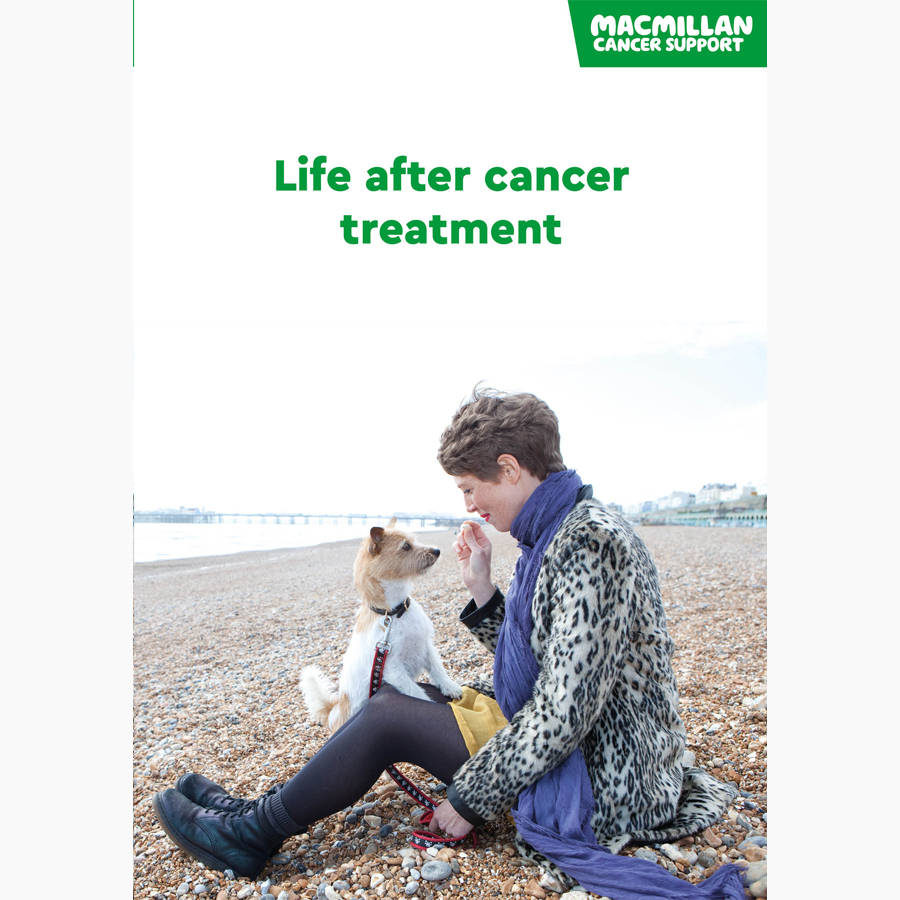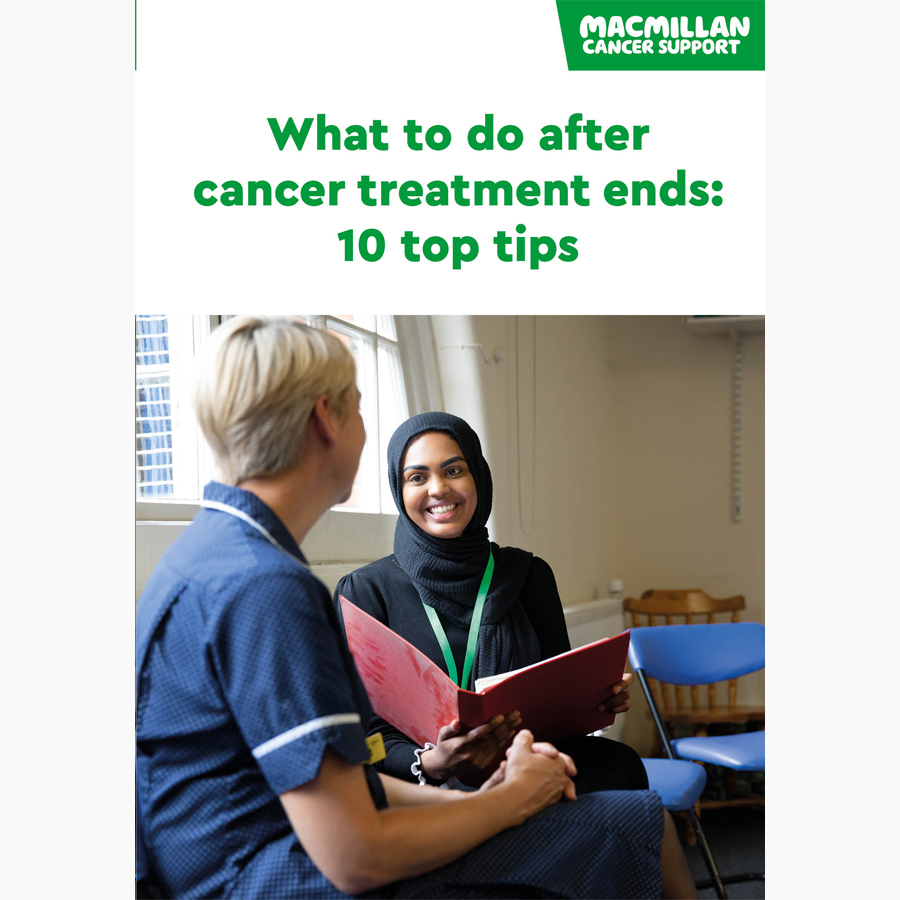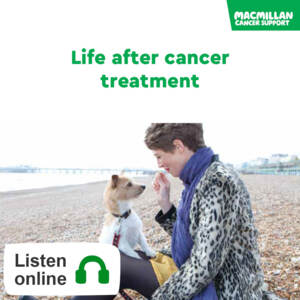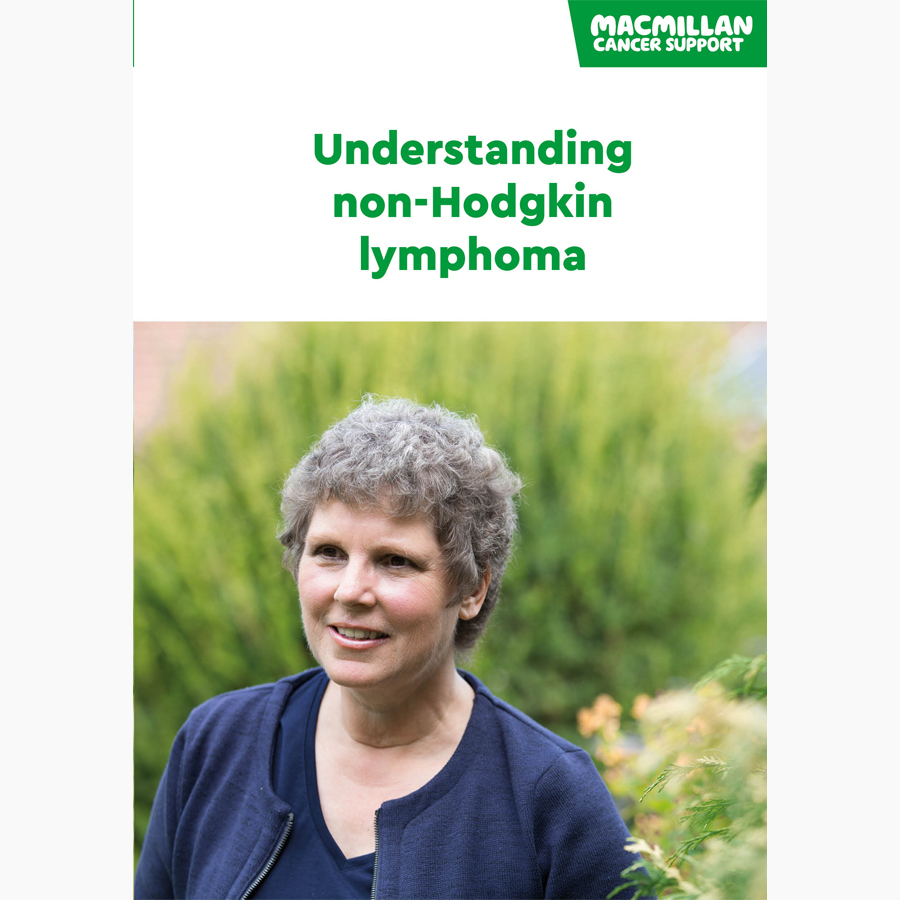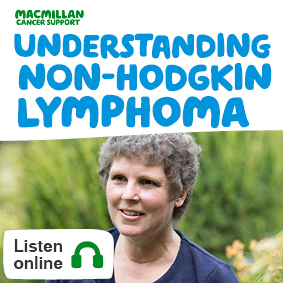Primary CNS lymphoma
Choose a type
What is primary CNS lymphoma?
Primary CNS lymphoma (PCNSL) is a rare type of lymphoma which starts in the central nervous system (CNS).
PCNSL may affect one or several areas of the brain or spinal cord. It may also affect the eye. This is called intraocular lymphoma or vitreoretinal lymphoma. PCNSL does not affect other areas of the body, such as the lymph nodes.
PCNSL develops when the body makes abnormal (cancerous) lymphocytes. Lymphocyte are white blood cells that normally help fight infection. PCNSL usually develops from B-cell lymphocytes. The most common type is a fast-growing non-Hodgkin lymphoma called diffuse large B-cell lymphoma (DLBCL).
A lymphoma that starts in another part of the body but is also in the brain at diagnosis, or spreads there later is called a secondary CNS lymphoma. It may be treated differently to primary CNS lymphoma.
Related pages
For healthcare professionals
If you are a healthcare professional, use our guide to find the right information and support for your patients affected by lymphoma. This explains the support available from Macmillan and from other trusted organisations.
Symptoms of primary CNS lymphoma
Primary CNS lymphoma (PCNSL) may cause different symptoms, depending on:
- where the tumour is in the brain or spinal cord
- how quickly it grows.
Possible symptoms can include:
- Behaviour or personality changes. These are common in primary CNS lymphoma, but changes are often slight to start with and may only be noticed by close family or friends.
- Finding it difficult to remember things. Problems with concentration or making decisions.
- Numbness, tingling or weakness. This may include numbness or weakness on one side of the body, or tingling and weakness in an arm or leg.
- Speech problems – difficulties with finding words or forming sentences.
- Changes in balance or movement. If your balance and co-ordination are affected, walking may be more difficult.
- Fits (seizures).
- Problems with eyesight, such as blurred vision or blind spots. These can happen if the lymphoma starts in or near the eye or in the part of the brain that controls your vision.
- Headaches and vomiting. Sometimes the lymphoma can increase the pressure in the skull. This may happen because of swelling or blockages caused by the tumour.
We have more information about these and other symptoms of brain tumours.
Related pages
Causes of primary CNS lymphoma
The causes of primary CNS lymphoma (PCNSL) are mostly unknown.
There are certain things that can affect the chances of developing PCNSL. These are called risk factors. Your risk of developing PCNSL may be higher if your immune system is weak. Your immune system can be weakened by:
- conditions such as HIV
- drugs called immunosuppressants – these are used after an organ transplant, or to treat autoimmune disease.
But most people diagnosed with PCNSL do not have immune system problems.
Like other cancers, PCNSL is not infectious. It cannot be passed on to other people.
Related pages
Diagnosis of primary CNS lymphoma
The most common tests for diagnosing primary CNS lymphoma (PCNSL) are:
A biopsy is when the surgeon removes a piece of the tumour from the affected area. The tissue will be sent to a laboratory for testing.
There are different ways to take a brain biopsy. Your surgeon can explain more about biopsies.
We have more information about diagnosing brain tumours.
Further tests for PCNSL
You may also have tests to check for signs of lymphoma in other parts of your body. These may include:
- blood tests
- a CT scan
- a PET-CT scan
- a lumbar puncture
- bone marrow samples
- eye tests
- an ultrasound scan of the testicles.
Your doctor will usually ask you if they can take a blood sample to check for HIV and other infections such as hepatitis B and C. They can plan safer and more effective treatment for you when they know if you have these infections.
Driving and PCNSL
You will not be allowed to drive from the time of your diagnosis until at least 2 years after your treatment has ended.
If you do drive, this change may be upsetting and frustrating. But it is a legal requirement. It is important to follow the advice you are given.
If you live in England, Scotland or Wales, you must contact the Driver and Vehicle Licensing Agency (DVLA) to tell them about your illness. If you live in Northern Ireland, contact the Driver and Vehicle Agency (DVA).
Related pages
Treatment for primary CNS lymphoma
A team of specialists will meet to discuss the best possible treatment for you. They are called a multidisciplinary team (MDT).
This will usually include:
- a lymphoma doctor (an oncologist or haematologist)
- doctors who specialise in treating brain conditions (neurologists or neurosurgeons)
- specialist nurses.
Your doctor, cancer specialist or nurse will explain the different treatments and their side effects to you. They will also talk to you about things to consider when making treatment decisions.
Treatment for primary CNS lymphoma (PCNSL) is usually given in 2 stages:
- First stage – this is normally chemotherapy. The aim is to get rid of all of the lymphoma. This is called remission.
- Second stage – this is to treat any remaining lymphoma cells that can’t be seen on tests. The treatment will try to prevent the PCNSL from coming back in the future (a relapse). This stage is called consolidation. Consolidation treatment can be with high-dose chemotherapy, a stem cell transplant, radiotherapy or chemotherapy tablets.
Treatments for PCNSL may include:
-
Immunotherapy and chemotherapy
Often the first treatment for PCNSL is a combination of the immunotherapy drug rituximab and chemotherapy. This is called chemoimmunotherapy. A treatment called MATRix 4 is a common combination of drugs for PCNSL. This is made up of rituximab and the chemotherapy drugs methotrexate, cytarabine and thiotepa. Another combination is methotrexate and rituximab with either temozolomide or procarbazine.
-
Radiotherapy
Radiotherapy uses high-energy rays to destroy cancer cells Radiotherapy may be given after chemotherapy, or on its own if you are not well enough to have chemotherapy. For PCNSL, radiotherapy is usually used to treat the whole brain. When lymphoma starts in the eye, radiotherapy can sometimes be given directly to the eye.
-
Stem cell transplant
A stem cell transplant is sometimes used to treat PCNSL. It is an intensive treatment, so it is not suitable for everyone. Usually you have the transplant using your own stem cells (autologous stem cell transplant).
You may have some treatments as part of a clinical trial.
Treating symptoms of PCNSL
PCNSL can increase the pressure in the skull or spine. For some people, this can cause symptoms that need treatment straight away. You may be given drugs called steroids. These may shrink the lymphoma for a time. Steroids can also be used to reduce any swelling around the lymphoma.
You usually start taking steroids after you have had a biopsy. Often you will only take them for a few weeks, and you may be able to stop soon after you start chemotherapy.
Rarely, surgery may be used to reduce the pressure.
If you have seizures caused by PCNSL, you may be given drugs called anticonvulsants to help prevent them.
After primary CNS lymphoma treatment
People often have many different feelings when they finish lymphoma treatment. You may feel relieved that treatment has finished, but worried about what will happen in the future.
You will have appointments with your lymphoma doctor or nurse less often than before. But at the same time, you may have new challenges to cope with and things to think about.
We have information below about some of the things people ask about after lymphoma treatment. But you may have other questions or need information about something else. If there is something you want to talk about at any point after treatment, you can:
- call the Macmillan Support Line free on 0808 808 00 00
- chat to our specialists online
- visit our Online Community to talk to people who have been affected by lymphoma, share your experience, and ask an expert your questions.
Related pages
Other organisations who offer information and support
The organisations below also offer information and support:
-
Blood Cancer UK
Blood Cancer UK offers support and information to people affected by blood cancers, including lymphoma.
-
Lymphoma Action
Lymphoma Action provides high quality information and support for people affected by lymphoma. It provides helpline services and a range of peer support including online support meetings, educational events and webinars. Its website includes TrialsLink, a database of lymphoma clinical trials.
Lymphoma follow-up
Related pages
Side effects of lymphoma treatment
You may have some ongoing side effects as you recover from lymphoma treatment. You can use our impacts of cancer A-Z to search for information about managing different symptoms and side effects. Or find out more about side effects of treatment for Hodgkin lymphoma or treatment for non-Hodgkin lymphoma.
-
Tiredness and fatigue
Tiredness (fatigue) often affects people with cancer. It can be caused by lymphoma or be a side effect of lymphoma treatment. RESTORE is an online resource that aims to help people living with cancer related fatigue.
-
Sexual well-being
Lymphoma and its treatment can sometimes affect your sex life. There are ways to improve your sexual well-being and to manage any problems.
-
Fertility
Treatment for lymphoma may affect your fertility. If you are worried about your fertility it is important to talk with your doctor before you start treatment. We have more information about:
Sometimes side effects may continue or develop months or years after treatment. These are called late effects. We have more information about long-term and late effects of treatment for lymphoma.
Well-being and recovery
It can take time to recover after lymphoma treatment. Some days you may feel better than others.
It is important to know where to get support or information if you need it. People often need support even some time after lymphoma treatment. But sometimes it is difficult to know who to ask for help. To find support:
- ask your GP or someone from your cancer team for advice about support in your area
- search cancercaremap.org to find cancer support services near you
- call us free on 0808 808 0000 or talk to us online - our cancer information and support specialists can offer guidance and help you find what you need.
Our course Help to Overcome Problems Effectively (HOPE) helps people during and after cancer treatment. It is a free, interactive, group based, self management support course. It runs for 6 weeks, with each weekly session lasting 2.5 hours. To find out more about HOPE courses in your area, email ServiceOpsSupport@macmillan.org.uk
A healthy lifestyle can help speed up your recovery. Even small lifestyle changes may improve your well-being and long-term health.
Related pages
Booklets and resources
Other useful information
Access our lymphoma information in other formats
We are working to make our website as accessible as possible. We want everyone to be able to use it to find the information they need. We have tips about using settings on your computer or device to help you use our website in our accessibility statement.
We also provide information in a range of languages and formats. If you cannot find the information you are looking for in the format or language you need, email us at cancerinformationteam@macmillan.org.uk
Order our non-Hodgkin lymphoma booklet
Download our lymphoma booklet and ebooks
Our Understanding non-Hodgkin lymphoma booklet is available as a pdf to download or view online and in ePub or Mobi formats to download.
Booklets and resources
Listen to our lymphoma audiobook
You can listen to our Understanding non-Hodgkin lymphoma audiobook. You can also search our full range of audiobooks.
Booklets and resources
Find non-Hodgkin lymphoma information in your language
We have a range of translated cancer information. This includes information about different cancer types, being diagnosed, cancer treatment, and side effects. We have some lymphoma information in the following languages. You can also search our most up to date list of web pages we have translated on request.
- Bulgarian - Mantle cell lymphoma / Мантелноклетъчен лимфом [PDF]
- German - Follicular lymphoma / Follikuläres Lymphom (FL) [PDF]
- Polish - Diffuse large B-cell lymphoma (DLBCL) / Chłoniak rozlany z dużych komórek B [PDF]
- Polish - Lymphoma / Chłoniak [PDF]
- Slovak - Anaplastic large cell lymphoma (ALCL) / Anaplastický veľkobunkový lymfóm [PDF]
- Slovak - Follicular lymphoma / Folikulový lymfóm [PDF]
- Tamil - Follicular lymphoma [PDF]
If you would like any of our lymphoma information translated into your language, please email cancerinformationteam@macmillan.org.uk
Watch British sign language videos
You can watch our BSL videos about cancer on YouTube.
Find our easy read booklets
Our easy read booklets use simple words and pictures to tell you about cancer. They can be useful if you want information that is easier to understand.
Looking for large print, Braille or another format?
If you would like our information in a different format such as large print or Braille, email us at cancerinformationteam@macmillan.org.uk or call us free on 0808 808 00 00.
About our information
-
References
Below is a sample of the sources used in our primary CNS lymphoma (PCNSL) information. If you would like more information about the sources we use, please contact us at cancerinformationteam@macmillan.org.uk
Non-Hodgkin’s lymphoma: diagnosis and management; NICE Guideline (July 2016).
British Society for Haematology. Guidelines for the diagnosis and management of primary central nervous system diffuse large B-cell lymphoma. 2018. British Journal of Haematology, 2019, 184, 348–363.
-
Reviewers
This information has been written, revised and edited by Macmillan Cancer Support’s Cancer Information Development team. It has been reviewed by expert medical and health professionals and people living with cancer. It has been approved by Senior Medical Editor, Dr Anne Parker, Consultant Haematologist.
Our cancer information has been awarded the PIF TICK. Created by the Patient Information Forum, this quality mark shows we meet PIF’s 10 criteria for trustworthy health information.
Date reviewed
This content is currently being reviewed. New information will be coming soon.

Our cancer information meets the PIF TICK quality mark.
This means it is easy to use, up-to-date and based on the latest evidence. Learn more about how we produce our information.
How we can help



